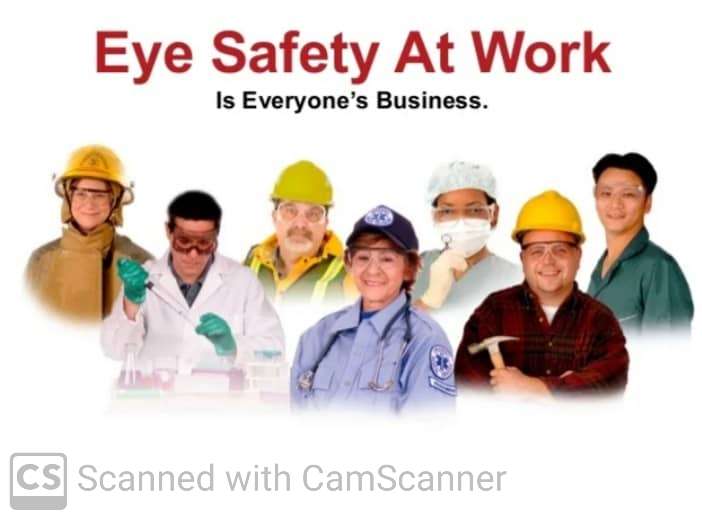Workplace Eye Hazard Awareness
Workers face a wide variety of hazards in various work environments both indoors and outdoors.
These hazards include;
Splashing chemicals, dust, particles, heat, optical radiations, flying debris, Bloodborne pathogens, Ultraviolet rays, Bluelight rays, projectiles, e.t.c.
In this process the eyes can receive Contusion, Abrasions, Burns, Punctures, Object/foreign bodies in the eye or under the eyelid, Cut or torn eyelid, Blood inside the eye, Pain or trouble seeing, Pupil dilation, Retinal burns, Dry eyes, and BLINDNESS.
*OCCUPATIONS with high risk for eye hazards/injuries include:*
-Factory/construction/ Manufacturing jobs.
-Auto repair, Carpentry, Welding, Electrical, Plumbing, Maintenance jobs.
-Baking, Cooking.
-Healthcare; Laboratory, Theatre.
-Mining, Farming, Yardwork, Cleaning jobs.
-Driving
– Office/ Computer work.
Occupational eye injuries can be prevented through the following ways:
1. Wearing Face Shields and helmet.
2. Wearing Safety Goggles.
3. Wearing Safety glasses.
4. Wearing Polycarbonate lenses.
5. Using Ultraviolet ray protective Eyewear (Photochromic/Transition blue cut/ Polarized lenses).
6. Removing or reducing eye hazards where possible.
7. Conducting eye hazard assessment of the workplace.
8. Conducting comprehensive eye screening for workers.
#workplaceeyeawarenessmonth.



